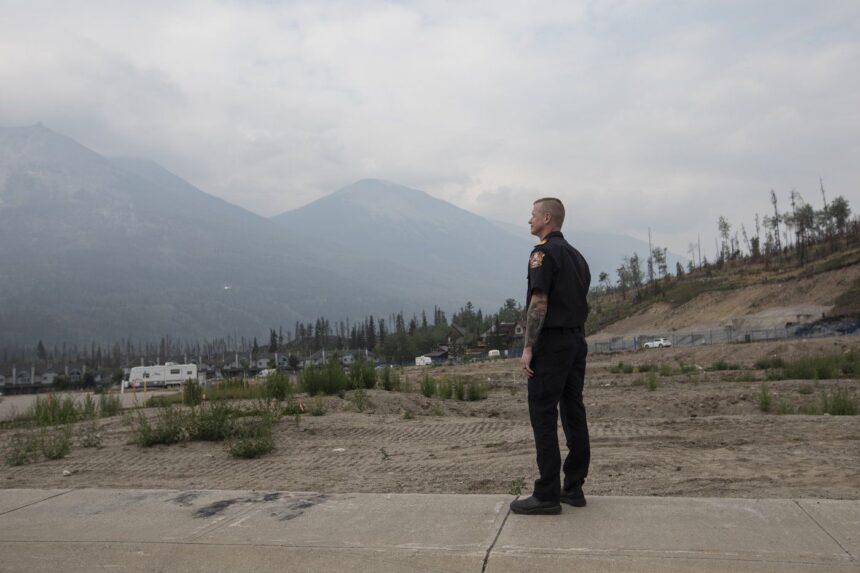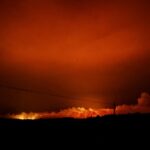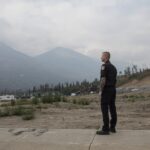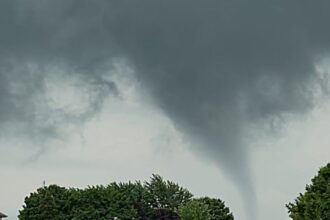The scars remain visible across the landscape of Jasper National Park as residents prepare to mark one year since the catastrophic wildfire that forced the evacuation of 25,000 people and destroyed nearly one-third of the iconic mountain town. The anniversary, which falls on July 22, will be commemorated with a series of solemn events designed to honor both the community’s resilience and recognize the ongoing recovery efforts.
“We’re still rebuilding, still healing,” says Mayor Richard Carson, whose own home was among the 350 structures lost to the flames. “This anniversary isn’t just about remembering what happened, but acknowledging how far we’ve come and how far we still need to go.”
The 2024 Jasper wildfire, fueled by unprecedented drought conditions and temperatures that soared above 35°C for ten consecutive days, spread with a ferocity that overwhelmed initial containment efforts. According to Environment Canada data, it was the most severe fire event in the park’s recorded history, consuming over 30,000 hectares of forest and infrastructure.
Particularly devastating was the loss of several historic buildings, including the century-old Jasper Park Lodge administration building and four structures dating back to the park’s establishment in 1907. Parks Canada estimates that restoration of damaged historical sites alone will exceed $75 million.
The economic impact continues to reverberate through the region. Tourism Alberta reports visitor numbers to Jasper have recovered to approximately 70% of pre-fire levels, a significant improvement from the 40% recorded in the immediate aftermath, but still far below the numbers needed for many businesses to thrive.
“We’ve lost nearly a quarter of our small businesses that simply couldn’t weather the extended closure and reduced tourism,” explains Samantha Kirkland, chair of the Jasper Chamber of Commerce. “Every closed storefront represents someone’s dream and livelihood.”
The anniversary events will begin with a sunrise ceremony led by Indigenous elders from the Treaty 6 and Treaty 8 territories, acknowledging the cultural and spiritual significance of the land. A community gathering at Centennial Park—itself partially rebuilt after fire damage—will feature the unveiling of a memorial sculpture crafted from salvaged materials from destroyed structures.
Environmental scientists from the University of Alberta will present findings on the ecological recovery, which shows promising signs of resilience. Dr. Emily Chen, lead researcher on the Jasper Recovery Project, notes that “certain areas are experiencing remarkably rapid regeneration, with lodgepole pine seedlings already establishing themselves in the burn zones, exactly as they’ve evolved to do after fire disturbances.”
Federal Minister of Environment Jonathan Williams will attend the commemorations, expected to announce an additional $30 million in recovery funding focused on climate-adaptive rebuilding strategies. This follows criticism that initial recovery efforts failed to adequately incorporate climate resilience measures in a region increasingly vulnerable to extreme weather events.
For many residents like Sarah Johnston, who spent nine months in temporary housing before returning to a rebuilt home this spring, the anniversary brings mixed emotions. “There’s gratitude for what was saved and for the incredible support we’ve received from across Canada. But there’s also this profound sense of loss that doesn’t simply disappear with new construction.”
Mental health supports have been expanded in the community, with dedicated trauma counselors now permanently stationed in Jasper—a recognition that the psychological impacts of displacement and loss continue long after media attention fades. School programs have incorporated resilience training and ecological education about fire’s role in forest ecosystems.
Perhaps most significant is how the Jasper experience has influenced wildfire management strategies across Canada. The updated National Wildfire Strategy, released in March 2025, specifically cites lessons learned from the Jasper disaster, particularly regarding evacuation protocols and the integration of traditional Indigenous knowledge in fire management practices.
As the community gathers to remember, rebuild, and reimagine their future, the fundamental question remains: in an era of intensifying climate change, how do communities like Jasper adapt to living with increased fire risk while preserving the natural and cultural heritage that defines them?























